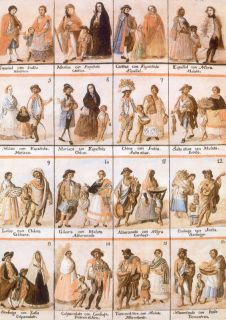
Exploring the history and experiences of mixed heritage persons and inter-racial relationships across the world

Exploring the history and experiences of mixed heritage persons and inter-racial relationships across the world
Note that the countries in this section will not be covered in detail, at least not in the first edition. The countries covered will be United Kingdom, Spain, Portugal, Netherlands, France, Netherlands and Belgium.
At some point in history there Belgian, Swedish, British, Danish, Dutch, French, German, Italian, Norwegian, Portuguese and Spanish had overseas colonies. A number of these countries, namely Spain, Portugal and the British, were also involved in the trans-Atlantic slave trade that changed the racial mix of the Americas that remain with us today. This does not mean that even in that age that Europe did not have a multi-racial makeup, it did. At least, from the time of the Roman Empire, some Europeans had been introduced to other races either as serving soldiers in the Roman Army or as slaves of Rome's administrators. In the pre-colonialism era, slaves, mainly African were being traded in European markets in Genoa and Venice and Lagos in Portugal. By 1550, 10% of Lisbon's population were black African slaves. History would teach us that there was probably some inter-racial mixing in the period but unlikely to be wide spread and the evidence of such liasons can only be revealed by genetic testing.
 From the 14th to 18th century, Europeans, themselves found themselves in danger of being slaves captured by coastal raids by North African pirates who captured over 800,000 people from Italy, Spain, Portugal and other coastal countries such as France. These European slaves were sold in slave markets in places such as Algeria and Morocco. Many of the female salves are said to have ended up in harems all over the Middle East. No doubt, the lack of birth control would mean that children were born to these women. Again the evidence of such off-spring will only be discoverable by genetic testing.
From the 14th to 18th century, Europeans, themselves found themselves in danger of being slaves captured by coastal raids by North African pirates who captured over 800,000 people from Italy, Spain, Portugal and other coastal countries such as France. These European slaves were sold in slave markets in places such as Algeria and Morocco. Many of the female salves are said to have ended up in harems all over the Middle East. No doubt, the lack of birth control would mean that children were born to these women. Again the evidence of such off-spring will only be discoverable by genetic testing.
Prior to this period the Moors, natives of Northern Africa, conquered and ruled and occupied the Iberian Peninsula for nearly 800 years. It is generally accepted that the number of Moors who actually settled was very small. The Moors were Islamic and worked to convert native Iberians quite successfully. If there was any wide scale inter-racial mixing at the time, it is now hidden in the genetics of some Spanish and Portuguese people. Portugal's imperialist ambitions start at about the time the Moors were expelled from Portugal in the 1249.
 The Europeans were mixing with Native people in their new colonies in the Americas maybe as soon as they set up their trading posts. The old world diseases however ravished local populations to the level that the transatlantic slave trade became a viable source of labour. The introduction of the African slaves extended the racial mixes that were possible in the Americas so much so that the Spanish had up to 12 ways to describe the racial mix of an individual. Political upheaval in Europe soon made it possible for a number of these colonies to obtain their independence in many cases led by settlers but more likely by their mixed off-spring.
The Europeans were mixing with Native people in their new colonies in the Americas maybe as soon as they set up their trading posts. The old world diseases however ravished local populations to the level that the transatlantic slave trade became a viable source of labour. The introduction of the African slaves extended the racial mixes that were possible in the Americas so much so that the Spanish had up to 12 ways to describe the racial mix of an individual. Political upheaval in Europe soon made it possible for a number of these colonies to obtain their independence in many cases led by settlers but more likely by their mixed off-spring.
The Europeans turned their attention to Africa at large soon afterwards, colonising the whole of Africa save from 2 countries by the 15th century. In Africa, inter-racial mixing occurred with the evidence still evident within settler communities - in other colonies the mixed heritage offspring were more likely re-absorbed into the local community. The British and the Portuguese furthered the racial mix by importing Indian labour into their African colonies. Some Indian communities maintained a strong racial segregation from the local and European communities which is still visible in many part of sub-Saharan Africa and in part responsible for Idi Amin's expulsion of them from Uganda in 1972. The Portuguese Goan Indians included mixed race descendants who themselves mixed with the local African populations.
World War II was a turning point for colonialism, after which many countries either demanded and got independence or war or insurrections that led to independence. Of particular note is that the settler colonies where particularly resistant to independence for example, South Africa and Zimbabwe.
Prior and during the independence movement, the effects on the colonising countries was the growing inter-cultural mix of their own home populations. Many of colonial subjects were either learning in Europe or had settled in Europe looking for a better life than the one back home. In some cases, the colonised subjects were considered 'citizens' with the right of abode which many European countries have over the years tried to remove due to worries of un-controlled immigration.
 "The white man's burden" continued after African independence as county after country descended into civil wars and political upheaval with thousands of ex-citizens successfully seeking refuge in their old mother countries. Idi Amin's expulsion of the Asians in 1972 meant the UK felt compelled to take some 30,000 of the estimated 80,000 displaced people. Many chose to go to other British ex-colonies like Australia and Canada.
"The white man's burden" continued after African independence as county after country descended into civil wars and political upheaval with thousands of ex-citizens successfully seeking refuge in their old mother countries. Idi Amin's expulsion of the Asians in 1972 meant the UK felt compelled to take some 30,000 of the estimated 80,000 displaced people. Many chose to go to other British ex-colonies like Australia and Canada.
European counties have not been averse to encouraging brain drain to cover for shortages within the local economy. Britain encouraged immigration from the West Indies in the 50s and is only now trying to control the immigration of teachers, doctors and nurses and other short supply skills from third world countries.
This means that the vast majority of colonising European counties have a settled immigrant population, some more likely to mix with the local population than others. This situation is leading to a rise of what can be described as multiculturalism where 2nd and 3rd generation immigrants, many of them of mixed heritage, no longer consider themselves immigrants but citizens of the country of their birth. These people are much more likely to mix with the indigenous European population to the point that the mixed heritage population in some countries such as Britain is the fastest growing part of the population. A recent population study stated that 10% of Britain's population in 2020 will be of mixed origin.